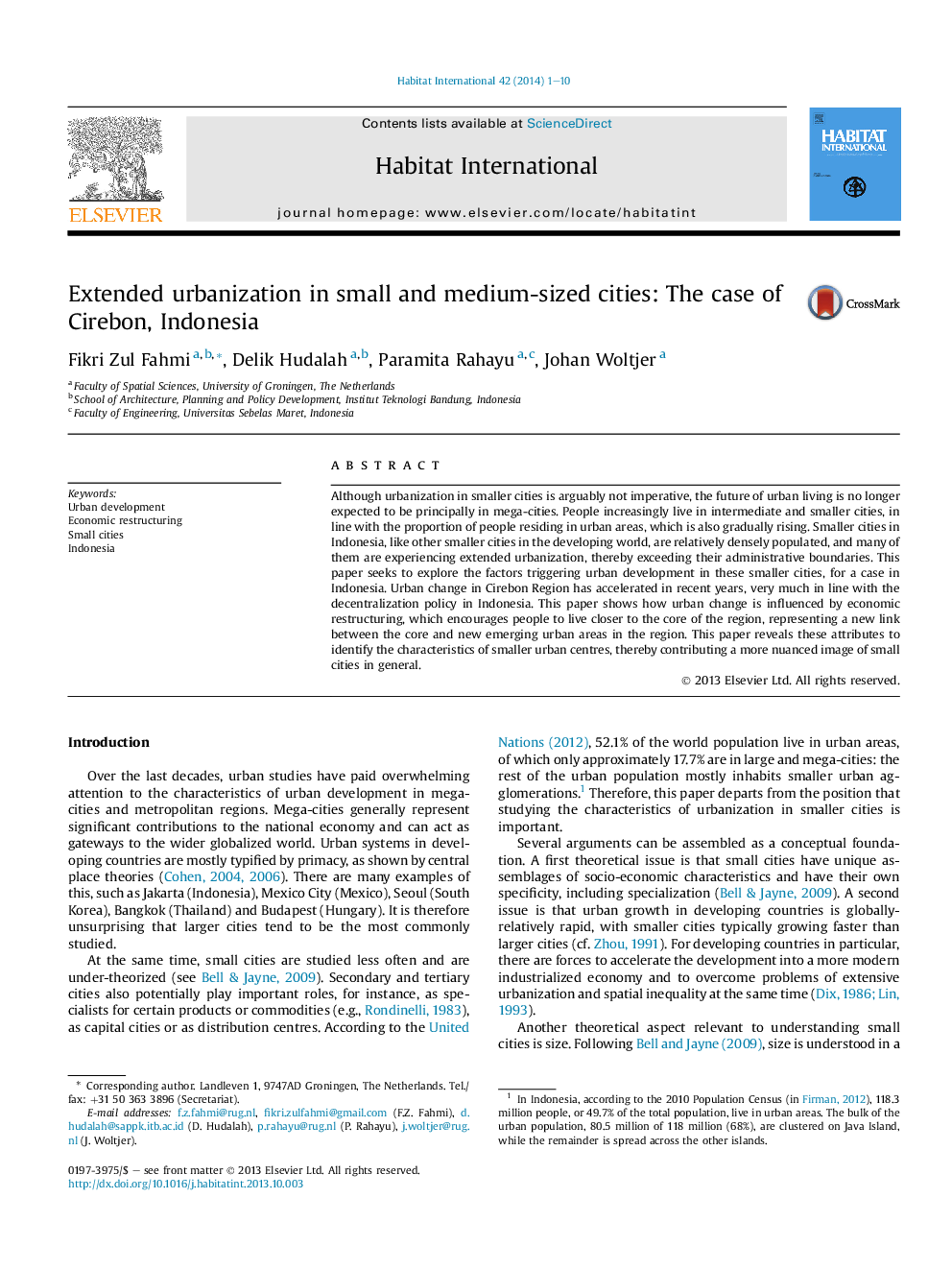| Article ID | Journal | Published Year | Pages | File Type |
|---|---|---|---|---|
| 1047954 | Habitat International | 2014 | 10 Pages |
•We elaborate the driving forces behind extended small city development in Indonesia.•The concentric pattern and accelerated development characterize the development.•Urbanization is mostly triggered by centripetal forces from economic restructuring.•Settlement expansion is generated by the mechanism within housing market.•Public needs and developers' profit-seeking behaviour enforce the mechanism.
Although urbanization in smaller cities is arguably not imperative, the future of urban living is no longer expected to be principally in mega-cities. People increasingly live in intermediate and smaller cities, in line with the proportion of people residing in urban areas, which is also gradually rising. Smaller cities in Indonesia, like other smaller cities in the developing world, are relatively densely populated, and many of them are experiencing extended urbanization, thereby exceeding their administrative boundaries. This paper seeks to explore the factors triggering urban development in these smaller cities, for a case in Indonesia. Urban change in Cirebon Region has accelerated in recent years, very much in line with the decentralization policy in Indonesia. This paper shows how urban change is influenced by economic restructuring, which encourages people to live closer to the core of the region, representing a new link between the core and new emerging urban areas in the region. This paper reveals these attributes to identify the characteristics of smaller urban centres, thereby contributing a more nuanced image of small cities in general.
